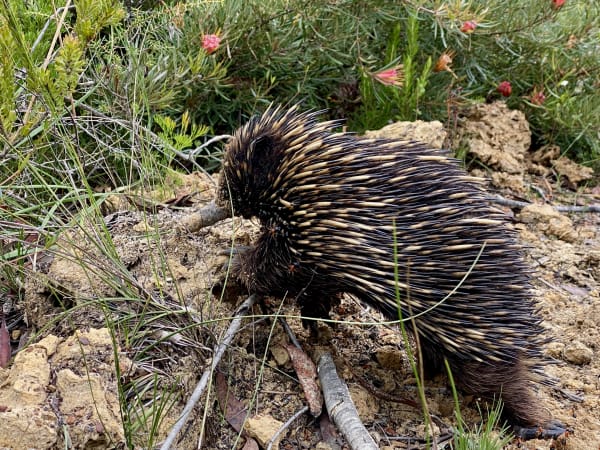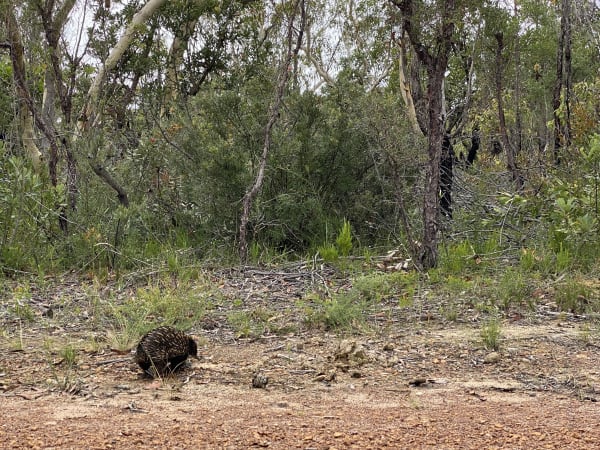Saturday was filled with all the spiky, spiny things. Banksias in various state of flower, their leaves scalloped and jagged. We’d had a relatively short, slow wander. A walk that was not so much about the wildlife, but more about the experience of being out in the world. We were right near the end of the road, literally, and could see the car parked just a way ahead, when out of the corner of my eye, just off the path, I saw a bundle of spikes and fur, sitting very, very still.

Echidnas will pretty much always go into protective mode when they hear someone nearby. They will curl up in a ball to protect their vulnerable and very fluffy (and very adorable) belly. And that’s how we found this one, curled up, nose tucked under, a patch of ants frantically stumbling over one another, where we had unwittingly disturbed the echidna’s feast.
The key here is to sit quietly. And to be patient. Sometimes, very patient. Make space for the animal. We moved to the other side of the path and waited, whispering to each other, not making any sudden moves or loud noises. Finally, after a fair bit of waiting, the echidna unfurled itself, lifted its strong snout into the air and sniffed.
It looked over its shoulder, no doubt smelling and seeing us and then instead of heading into the bush as we had expected, it turned to face us, walked right out onto the side of the path and into the open. It put its beak to the ground, a beak that is firm and strong enough to be used to help break apart logs, termite mounds and, in this case, to push hard into the earth, searching for ants.

We could hear it snuffling and could see little bubbles popping up and out of its nostrils every now and then. And then it began to dig. Often when you see an echidna, it’s all about the spines. These modified hairs really are the first thing you think of when you call an image to mind. But they also have five large claws on their front feet and we watched excitedly as the animal dug furiously at the ground, flinging rocks and masses of dirt out of the way.
Ants, different species in different spots, bubbled up and out of the earth. They climbed over the echidna’s face and body as it used its seriously long tongue (up to 18 centimetres and covered in a sticky substance) to slurp up the insects as they tried to escape the nest.
We spent over an hour and half, sitting and wandering along with our spiky friend and even had him walk up to our shoes and sniff them before clambering just to the side of us, resuming the frantic digging as he went. I’m not sure how your Saturday was, but I’m certainly happy that mine was filled with sharp edges.

If you’d like to watch the chaos of a feeding echidna, you can find the video I took here.






